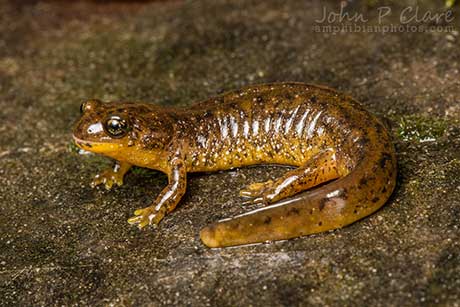
Overview
- Species Common Name Southern Torrent Salamander
- Species Scientific Name Rhyacotriton variegatus
- Federal Listing Status Species of Concern
- State Listing Status Sensitive
Ecoregions

Coast Range
Oregon’s Coast Range, known for its dramatic scenery, is extremely diverse, with habitats ranging from open sandy dunes to lush forests and from tidepools to headwater streams. It follows the coastline and extends east through coastal forest to the border of the Willamette Valley and Klamath Mountains ecoregions

Klamath Mountains
The Klamath Mountains ecoregion covers much of southwestern Oregon, including the Umpqua Mountains, Siskiyou Mountains, and interior valleys and foothills between these and the Cascade Range. The Rogue watershed has the largest population of any coastal watershed in Oregon (Jackson County, Josephine County, and a portion of Curry County). Several popular and scenic rivers run …

Willamette Valley
The Willamette Valley ecoregion is bounded on the west by the Coast Range and on the east by the Cascade Range. This long mostly level alluvial plain has some scattered areas of low basalt, and contrasts with productive farmland and large urban areas. It has the fastest-growing human population in the state resulting in challenges due to land-use changes.